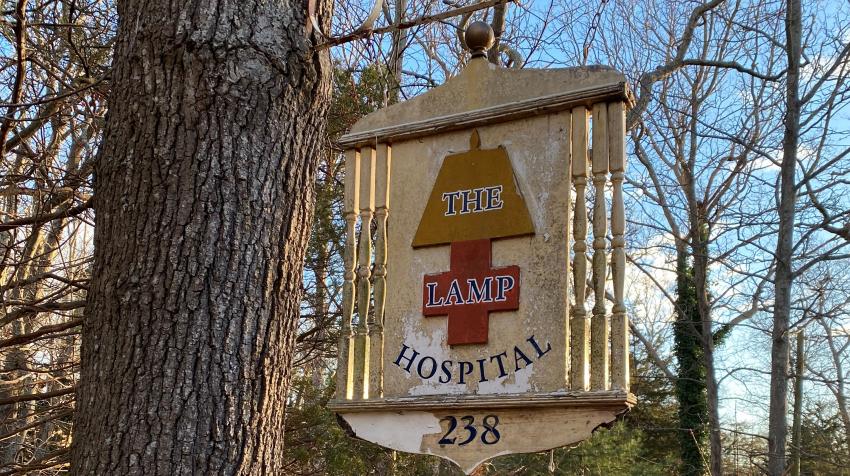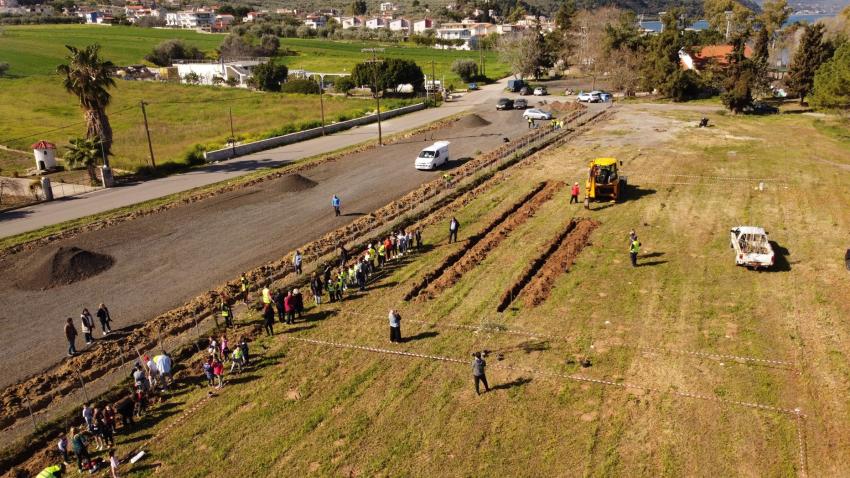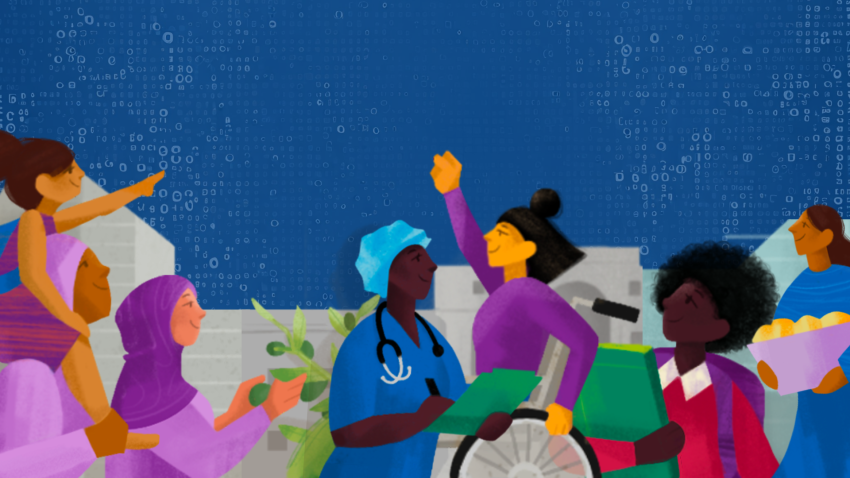I pass the sign on my neighbourhood walks every day but am still not sure what it means. The house behind it seems shuttered but not shabby, wistful perhaps. Was this once a small hospital that called itself “The Lamp”? Or was it something that could have been conjured by Hans Christian Andersen, a hospital where ill or infirm lamps came to have their sockets secured and fuses fined? Whatever its original purpose, the sign is a reminder of the light that medicine and its practitioners have brought to so many lives of darkness and despair, an illumination vivid in the memory of Elizabeth Blackwell, the first woman to receive a medical degree in the United States, whose birth bicentennial was observed, indeed celebrated, last week, in a February marked by romance and reason, whether Valentine’s Day this Sunday, or the International Day of Women and Girls in Science, observed on Thursday.
In its 2015 resolution establishing the Day, the United Nations General Assembly invited all Member States and academia, among others, to promote the full and equal participation of women and girls in education, training, employment and decision-making processes in the sciences, promote career development for women in science and recognize the achievements of women in science. As in the case of the International Day of Education we referenced two weeks ago, the choice of February 11 as the date for its observance does not appear to be deliberate, although it is a day sanctified in history as marking Nelson Mandela’s release, in 1990, from Victor Verster Prison outside Cape Town, South Africa, after 27 years as a political prisoner. Four years later, soon after assuming office as free South Africa’s President, he established Women’s Day on August 9 each year in honour of the women who fought to end apartheid. Among what he described as “a legion of brave and determined women” was Albertina Sisulu, a nurse who was one of the leaders of the African National Congress Women’s League, who brought the caring inherent in her profession to the justice she sought for her people.
As I write this, the SDG conference is on at the University of Bergen, UNAI’s energetic hub on the sustainable development goal related to “life below water”, a conference its organizers describe as an “academic festival”; one of the panels examines the challenge that an academic career in medicine still holds for women; as it notes “the majority of master and PhD students in medicine are women, but women hold a minority of senior and leading faculty positions in this field. Promoting women into tenured positions at universities may lead to a larger focus on women's health in education and research, and international and multidisciplinary collaboration is a tool in this regard. The conference was inaugurated by Norway’s Foreign Minister Ine Eriksen Soreide and featuring a galaxy of other women leading in academic disciplines but proud of the multiplicity of their identities; as Dr. Dorothy Jane Dankel of the university’s department of biological sciences describes herself in her Twitter handle, “scientist, feminist, wife, mom in random order.”
Indeed, as Dr. Padmini Murthy, recipient of the 2016 Elizabeth Blackwell Medal of the American Medical Women's Association, has written in the UN Chronicle, “ women have stood at the helm of leadership, both formally and informally, and across disciplines, in improving the health status of their families and communities around the world.” On the cusp of Valentines’ Day,, it is humbling to also remember the conflicts many women in science experienced in what they saw, or were compelled to believe, between the careers and the homes to which they aspired. Elizabeth Blackwell sought, as she poignantly phrased it in the diary she maintained, an “absorbing occupation,” feeling “more determined than ever to become a physician, and thus place a strong barrier between me and all ordinary marriage. I must have something to engross my thoughts, some object in life which will fill this vacuum and prevent this sad wearing away of the heart.” Almost a century later, in Canada, a woman named Isabella Mary Abbott served as a volunteer nurse in France during the First World War; her subsequent marriage ended just before the birth of her son, the actor we know and mourn today as Christopher Plummer. As a single mother, Isabella Abbott worked as secretary to the dean of Sciences at UNAI member McGill University, forging an indirect relationship with a discipline that women of her generation rarely had opportunity to invest in directly. It was only in 1936 that her cousin, Maude Abbott, became the first woman to be admitted to McGill's Faculty Club. How happily times have changed; the current Principal and Vice-Chancellor of McGill is Dr. Suzanne Fortier, a crystallographer, who as a student was among the first group of girls to win admission to the general and vocational college CEGEP, where she and a friend entered the 1968 Quebec provincial science fair with a project on the diffraction of sound waves, shaping a future career in a field of study which, in her words “present[s] you with beautiful puzzles to solve. There are incredible pictures that you get of the structure of matter.”
“Structure of matter”, at an elemental and elegiac level, summons to mind the song by which Christopher Plummer is perhaps best known, from the film in which, as he once said “working with Julie Andrews is like getting hit over the head with a valentine.” The structure of benign botanical matter that is the Edelweissor the structure of metaphorical meteorological matter that is its “blossom of snow” can transform into vastly different results; blooming and growing like the Austrian Ecologization of Schools Network, or equally growing into a force for death and devastation as we saw in Uttarakhand in India this week, an attestation, in Antonio Guterres’s phrase that making peace with nature is the defining task of a century of which a fifth has already passed, a peace sustained in the reason which will prove true Marie Curie’s affirmation that “nothing in life is to be feared, it is only to be understood. Now is the time to understand more, so that we may fear less.”
At the Indian Institute of Technology, Madras, in Chennai, India, a group of students have “initiated a campaign called She Can that is helping school girls look at unconventional career options such as astronomy, through a series of online sessions. Launched in January, this is part of IIT-M's long-running tech fest - Shaastra. Shvetha Sivaprasad, Student Strategist, Shaastra 2021 says that “the campaign is all about furthering the idea that women can achieve whatever they dream of.” Sylvia Plath, whose death anniversary fell on Thursday, had written how “once past the dream-peopled village, her eyes entertained no dream, and the sandman’s dust lost lustre under her footsoles.” A celebration of how women of science have helped sustain and realize the hopes of the “dream-peopled” is a celebration of the dreams they themselves entertained, dreams the sandman brings to children by sprinkling sand across their eyes as they travel from wakefulness to sleep, nestled by a lamp that is hospital to lustre lost.
Ramu Damodaran
Chief, United Nations Academic Impact




